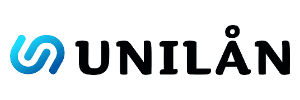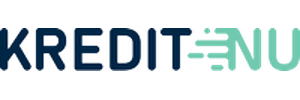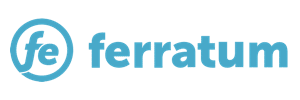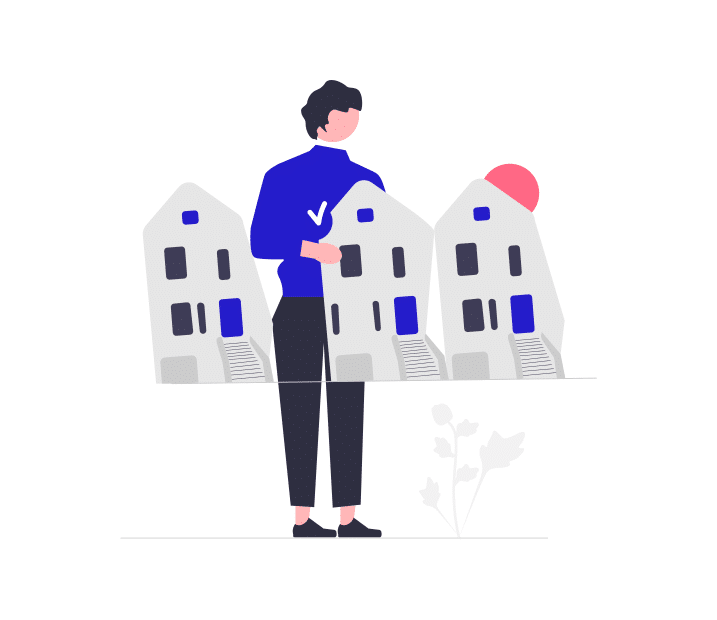Get a House loan today
Mortgage Loan Denmark
Free, 100% digital mortgage loan comparison
Save money with lower interest rates
Instant answers from up to 21 Danish lenders
High approval rate

Amount
DKK 10.000 – 400.000
(≈ USD 1.500 – 61.000)
Term
12-180 months
Interest rate
2,04-24,99 %
Verified Company
100% free and no obligation to apply
Payment on the same day
Example: Total credit amount: DKK 175,000 – Term: 11 years. APR: 7.45%. – Variable interest rate: 7.00%. – Establishment costs: DKK 1,750 – Expected monthly payment: DKK 1,924 – Total repayment: DKK 253,968 – Term: 1-15 years. – APR: 2.04-24.99%. – Max APR: 24.99%.
New loan provider

Amount
DKK 20.000 – 100.000
(≈ USD 3.100 – 15.600)
Term
48-96 months
Interest rate
19,7%-24,9%
Verified Company
100% free and no obligation
Money in your account within 24 hours
Example: Loan of DKK 50,000 over 72 months. Monthly payment: DKK 1,178. Interest rate: 16.2%. APR (annual percentage rate): 21.1%. Credit costs (the price you pay to borrow the money): DKK 34,816. Total repayment (your loan including credit costs and fees): DKK 84,816. An administration fee of DKK 33 per month and an origination fee for establishing a loan of DKK 4,000 are included in all calculations. There is a 14-day right of withdrawal on the credit agreement.

Amount
DKK 10.000 – 400.000
(≈ USD 1.500 – 61.000)
Term
12-144 months
Interest rate
0,00-24,24 %
Verified Company
100% free and no obligation to apply
Easy and fast
Example: Calculation example: Total credit amount DKK 35,000. Term 5 years. APR 7.68%. Variable debit interest rate 7.00%. Establishment fee DKK 350. Total repayment DKK 42,000. Term 1-12 years. Interest rate spread 0.00-24.24%.

Amount
DKK 6.000 – 65.000
(≈ USD 900 – 10.000)
Term
6-15 months
Interest rate
20,60%
Verified Company
100% free and no obligation
Loan for what you need
Example: Credit amount: DKK 12,000 over 12 months. Interest: DKK 1,408.38. Interest rate: 20.60%. Repaid in 12 payments. Total amount: DKK 13,408.38. APR 23.49%.

Amount
DKK 4.000 – 25.000
(≈ USD 600 – 3.800)
Term
1-24 months
Interest rate
24,87%
Example: DKK 8,000 over 24 months. Annual debtor interest: 0%. APR: 24.87%. Monthly payment: DKK 416.67 Total repayment: DKK 10,000 Total credit income: DKK 2,000 Calculation includes an establishment fee of 25%. Applicant must be between 23-70 years of age and must not be registered in the RKI or Debtor Register and must also meet the criteria in the overall creditworthiness assessment.

Amount
DKK 10.000 – 400.000
(≈ USD 1.500 – 61.000)
Term
12-180 months
Interest rate
2,04-24,99 %
Example: Total credit amount: DKK 175,000 – Term: 11 years. APR: 7.45%. – Variable interest rate: 7.00%. – Establishment costs: DKK 1,750 – Expected monthly payment: DKK 1,924 – Total repayment: DKK 253,968 – Term: 1-15 years. – APR: 2.04-24.99%. – Max APR: 24.99%.

Amount
DKK 1.500 – 50.000
(≈ USD 230 – 7.700)
Term
9-199 months
Interest rate
24.99 %
Example: DKK 10,000 over 12 months. Etc. costs: DKK 0. APR: 24.99%. Fixed debit interest rate: 22.52%. Monthly payment: DKK 934.96. Total credit costs: DKK 1,219.47. Total repayment amount: DKK 11,219.47. Monthly payment 3.5% of the outstanding credit or min. DKK 200, depending on which is greater. Min. repayment: 9 months. Max. repayment: 199 months.

Amount
DKK 10.000 – 300.000
(≈ USD 1.500 – 46.400)
Term
36-120 months
Interest rate
9,39-24,43 %
Example: DKK 40,000. Term 60 months. Establishment costs DKK 1,600. Variable debit interest rate 8.21- 16.08%. APR 11.64 – 19.72%. Monthly payment incl. admin. fee DKK 871 – 1,019. Total credit costs DKK 12,254 – 21,120. Total amount repaid DKK 52,254 – 61,120.
Mortgage loans in Denmark are a key financial tool for purchasing property, offering a range of options tailored to diverse buyer needs. These loans are characterized by their long-term nature and are typically secured by the purchased property. With a variety of lenders and products available, potential homeowners need to understand the nuances of these loans, including interest rates, repayment terms, and associated fees.
The Danish mortgage system is known for its flexibility and competitiveness, making it crucial for buyers to thoroughly research and compare options to find the best fit for their financial situation.
Different types of mortgages in Denmark
In Denmark, the mortgage landscape offers several types of loans, each catering to different borrower needs. Understanding these options is crucial for making an informed decision. Here are the key types of mortgages available:
- Fixed-Rate Mortgages: These offer a constant interest rate throughout the loan period. They’re ideal for those who prefer stability in their monthly payments, allowing for easier budgeting and financial planning.
- Adjustable-Rate Mortgages (ARMs): ARMs start with a fixed interest rate for a specific period, which then adjusts at predetermined intervals. This option can be beneficial if initial lower rates are preferred and the borrower is comfortable with future rate fluctuations.
- Interest-Only Mortgages: This type allows borrowers to pay only the interest for a certain period. While monthly payments are lower initially, the principal amount remains unchanged, leading to higher payments later.
- Balloon Mortgages: These involve relatively low payments for a set period, followed by a large, or “balloon”, payment at the end. This can be a suitable option for those expecting to have higher income in the future or planning to sell the property before the balloon payment is due.
Each type of mortgage in Denmark has its specific advantages and considerations, and the choice largely depends on individual financial circumstances, risk tolerance, and long-term housing plans. Prospective borrowers should carefully evaluate their options and possibly consult with a financial advisor to determine the best mortgage type for their situation.
How to apply for a house loan

Securing a house loan in Denmark is a significant financial decision and involves a detailed process, ensuring that both the lenders’ requirements and the borrowers’ needs are met. The journey to obtaining a mortgage in Denmark starts with a thorough assessment of your financial standing, continues with an exploration of various loan options, and culminates in the legal formalities of acquiring the property.
Understanding the nuances of the Danish mortgage system is crucial. It’s renowned for its borrower-friendly terms and competitive interest rates but also requires careful navigation. Prospective borrowers should be prepared for a comprehensive evaluation of their financial health, which influences the loan terms they receive. This evaluation ensures that the loan is manageable and aligns with the borrower’s long-term financial goals.
Here’s how to apply for a house loan in Denmark:
- Assess Your Financial Health: Before applying, evaluate your finances. Consider your income, expenses, debts, and credit score. This will help you understand how much you can afford and the loan amount you should apply for.
- Gather Necessary Documents: You’ll need to provide various documents, including proof of income (such as pay slips), employment details, tax returns, bank statements, and identification documents.
- Research Loan Options: Investigate different mortgage lenders and the types of loans they offer. Look at interest rates, loan terms, repayment schedules, and any additional fees.
- Pre-Approval: Consider getting pre-approved for a loan. This involves a lender evaluating your financial information and stating how much they would be willing to lend you. Pre-approval can make you a more attractive buyer when house hunting.
- Choose a Property: Once you have an idea of your budget, you can start looking for a property. In Denmark, it’s common to use a real estate agent to help with this process.
- Formal Loan Application: After selecting a property, complete a formal loan application with your chosen lender. They will conduct a detailed assessment, including a valuation of the property.
- Loan Offer and Acceptance: If your application is successful, the lender will make a loan offer. Review this carefully, and if you agree to the terms, sign the loan agreement.
- Legal and Closing Processes: In Denmark, the mortgage process involves legal documentation, which might require a lawyer. After all documents are signed and the loan is finalized, the funds will be disbursed, and the property can be purchased.
- Insurance and Registrations: Lastly, ensure the property is insured and all necessary registrations are completed, such as registering the change of ownership.
Example of a mortgage loan
Let’s illustrate an example of a mortgage loan in Denmark to provide a clearer understanding. This example will outline key loan parameters for a hypothetical scenario:
| Parameter | Details |
|---|---|
| Loan Amount | 1,500,000 DKK |
| Loan Type | Fixed-Rate Mortgage |
| Interest Rate | 3% (fixed for the entire term) |
| Loan Term | 20 years (240 months) |
| Monthly Payment | 8,381 DKK |
| Total Interest Paid | 513,840 DKK |
| Total Amount Repaid | 2,013,840 DKK |
In this example, the borrower takes out a mortgage of 1,500,000 DKK for purchasing a property. The loan has a fixed interest rate of 3%, meaning the interest rate remains constant throughout the loan term. The term of the loan is set at 20 years, leading to monthly payments of 8,381 DKK. Over the course of 20 years, the borrower will pay a total of 513,840 DKK in interest, bringing the total amount repaid to 2,013,840 DKK.
This example is a basic illustration and actual mortgage terms can vary based on the lender, the borrower’s creditworthiness, and market conditions. It’s important for potential borrowers to use mortgage calculators or consult with financial advisors to get a more accurate picture tailored to their specific circumstances.
What is a Home Equity Loan?
Home equity loans in Denmark offer homeowners a way to leverage the equity built up in their property. These loans can effectively finance large expenses such as home renovations, education costs, or consolidating debt.
Related: Loans in Denmark
What They Are
Home equity loans are a type of second mortgage. They allow homeowners to borrow against the equity they have accumulated in their property. Equity is the difference between the current market value of the house and the outstanding mortgage balance.
How They Work
These loans provide a lump sum of money upfront, which is then repaid over a set period with fixed monthly payments. The interest rates can be either fixed or adjustable.
Interest Rates
Typically, home equity loans have lower interest rates than unsecured loans or credit cards, making them an attractive option for borrowers.
Loan Terms
The terms can vary, usually ranging from 5 to 30 years. The specific terms will depend on factors like the amount borrowed, the equity in the home, and the borrower’s creditworthiness.
Uses
Homeowners often use these loans for significant expenses, such as home improvements, which can increase the property’s value, or for consolidating high-interest debt.
Risks
As these loans are secured against your home, there’s a risk of foreclosure if you’re unable to make payments. It’s crucial to consider your ability to repay before taking out a home equity loan.
FAQ
Frequently Asked Questions
The amount you can borrow typically depends on your financial situation and the value of the property, but generally, it can be up to 80% of the property’s value.
A minimum downpayment is usually around 5% of the property’s purchase price.
Yes, both residents and non-residents can obtain a mortgage in Denmark, though non-residents may face additional requirements.
The process can be complex due to regulatory and market factors, but with proper guidance and preparation, it’s manageable.
Typically, a deposit of around 5% of the property’s purchase price is required.


